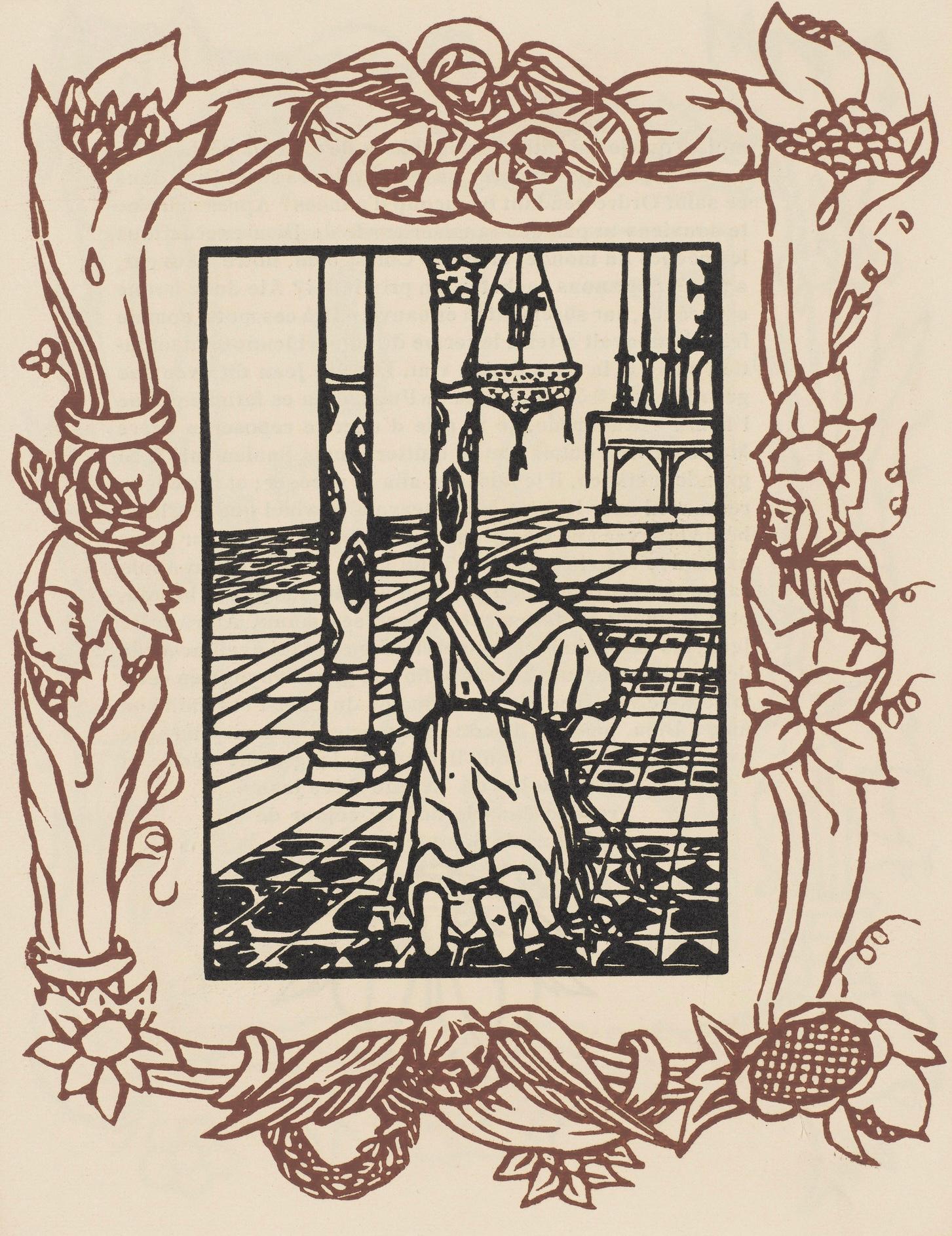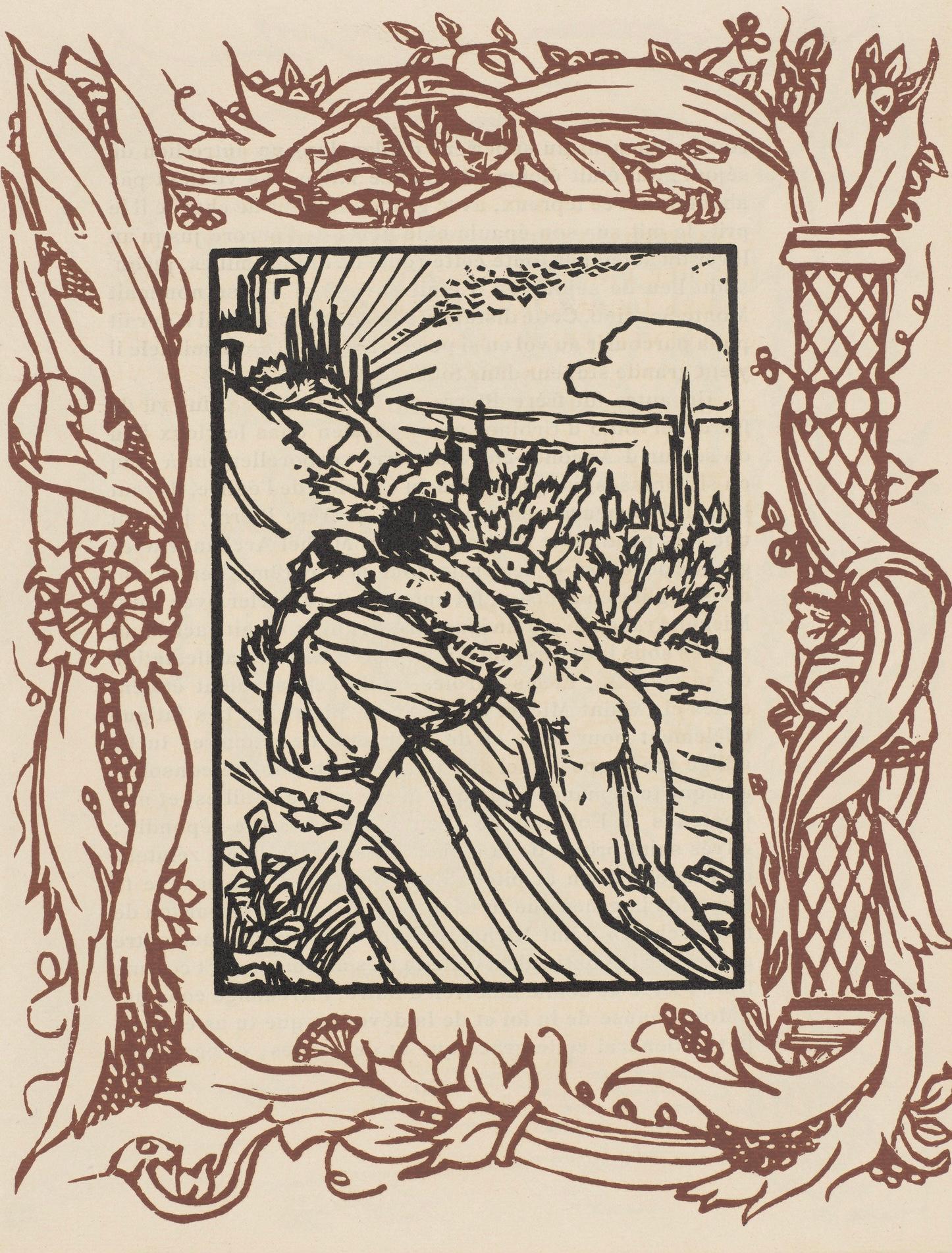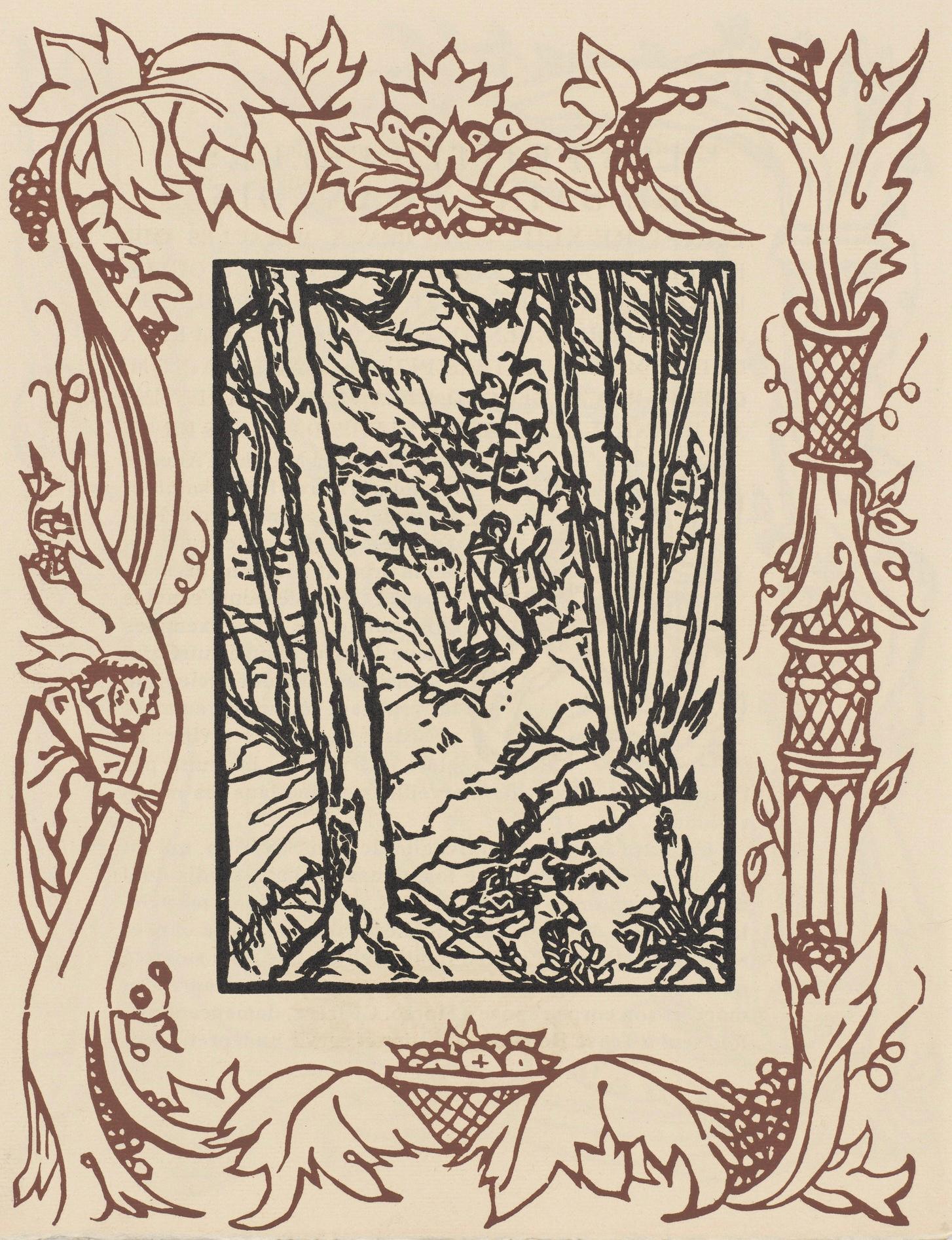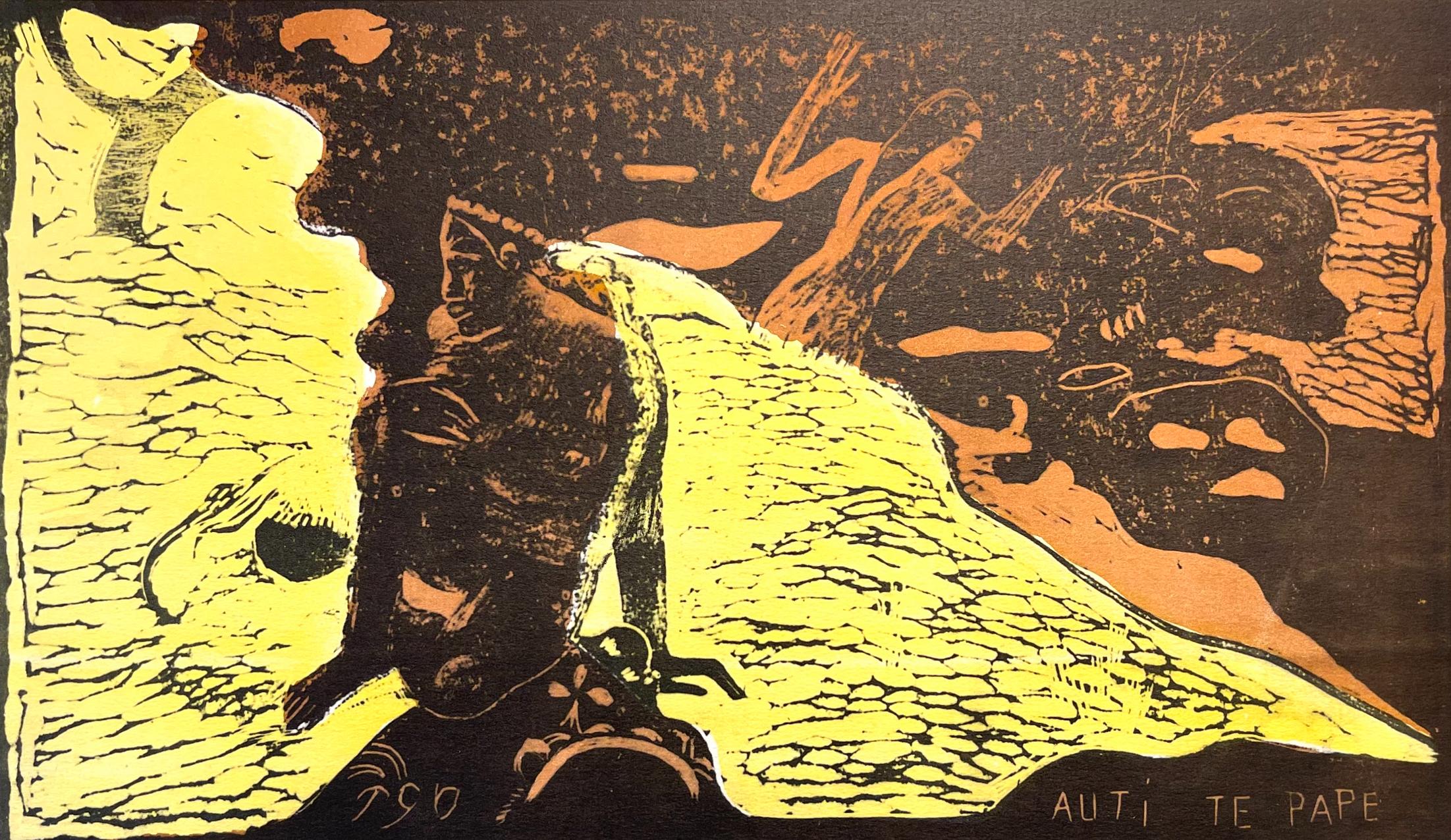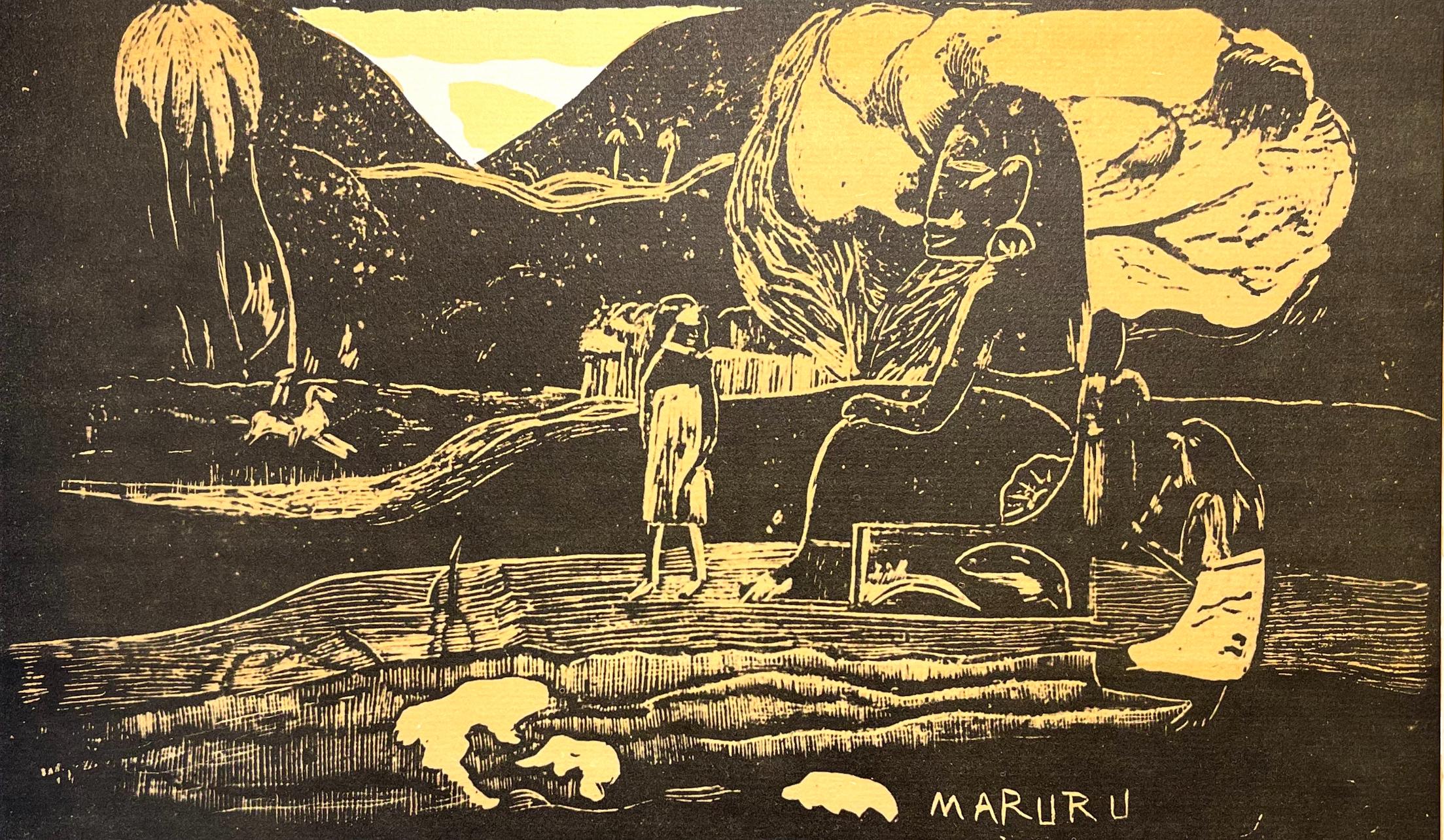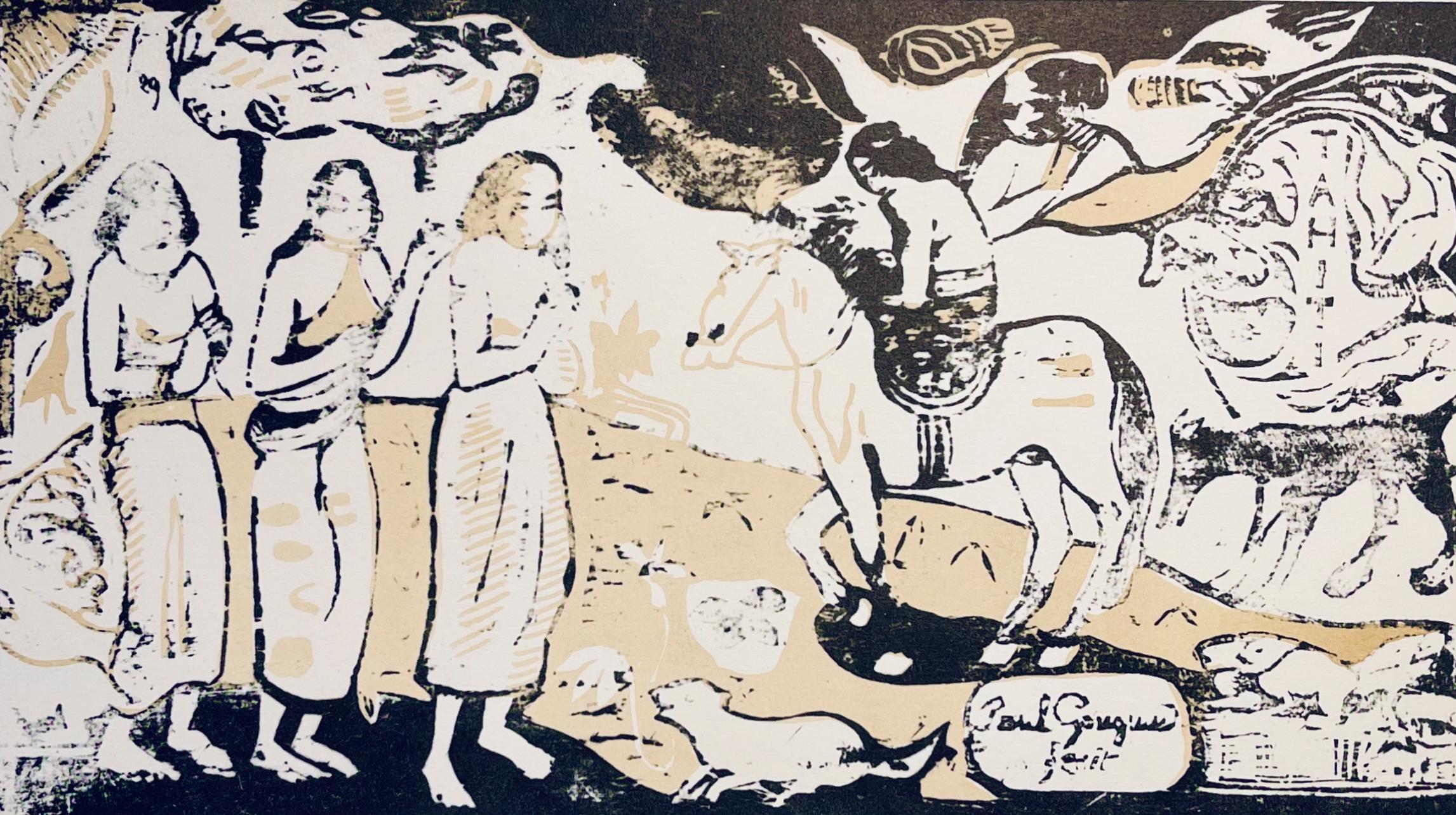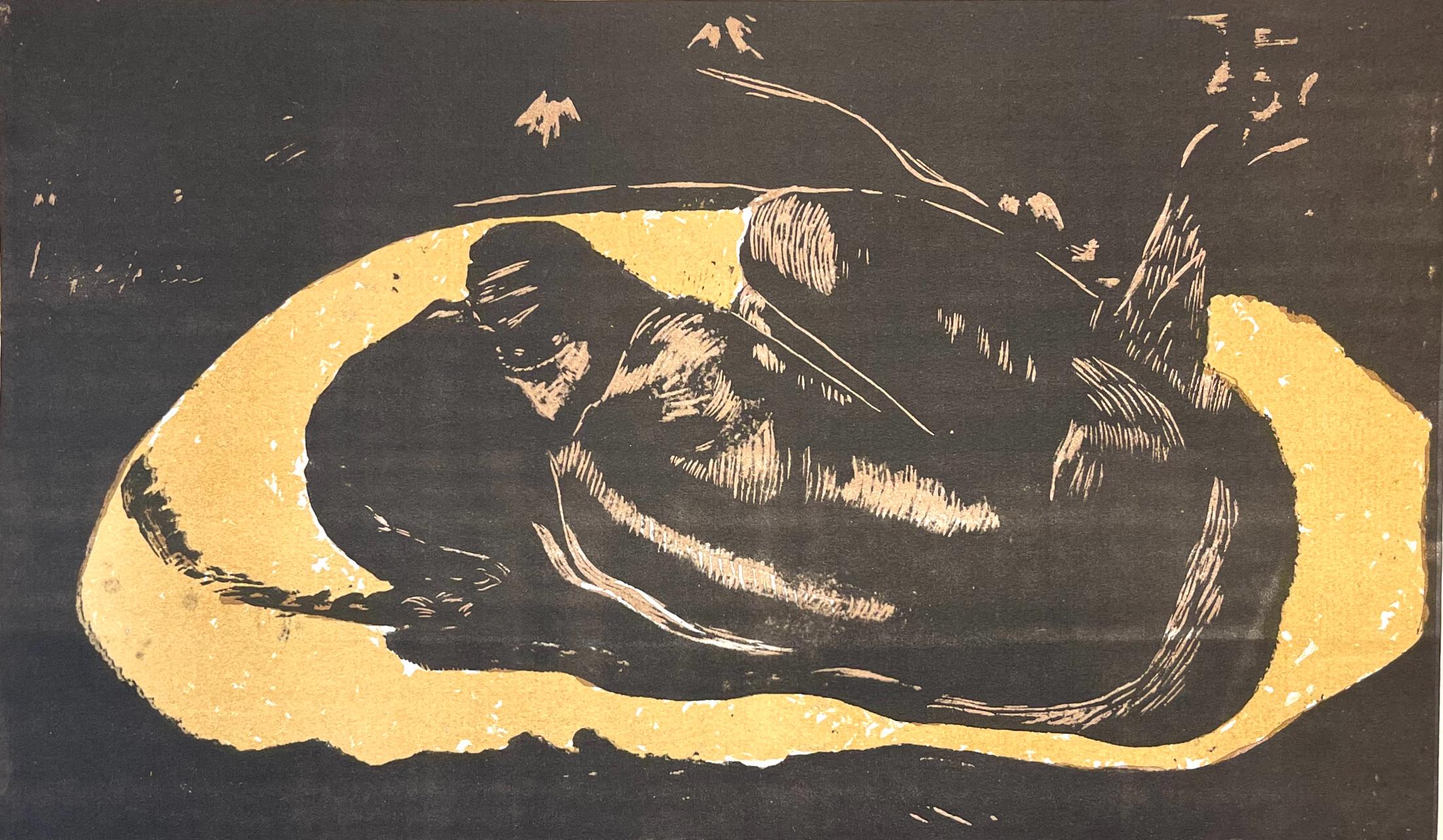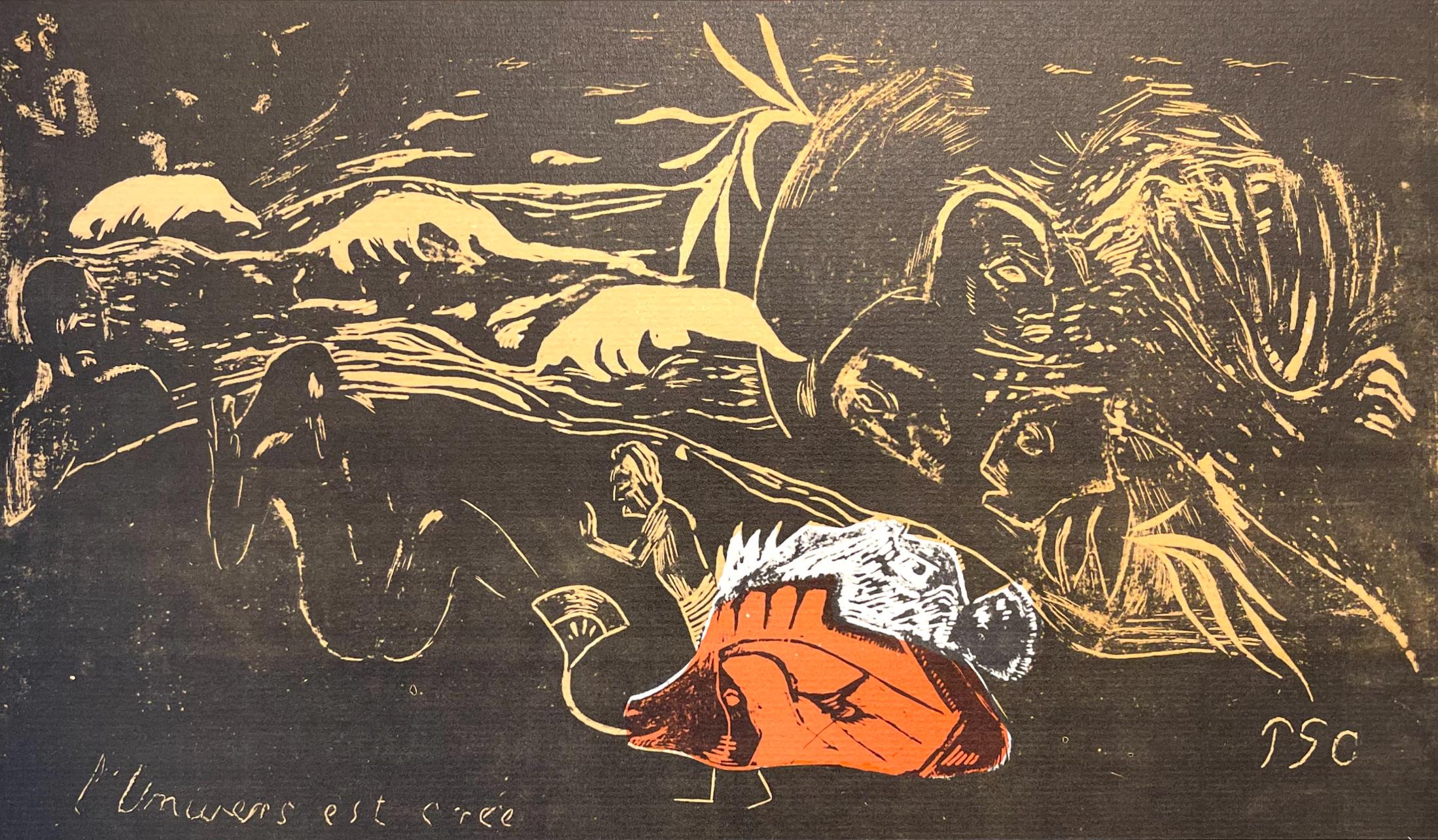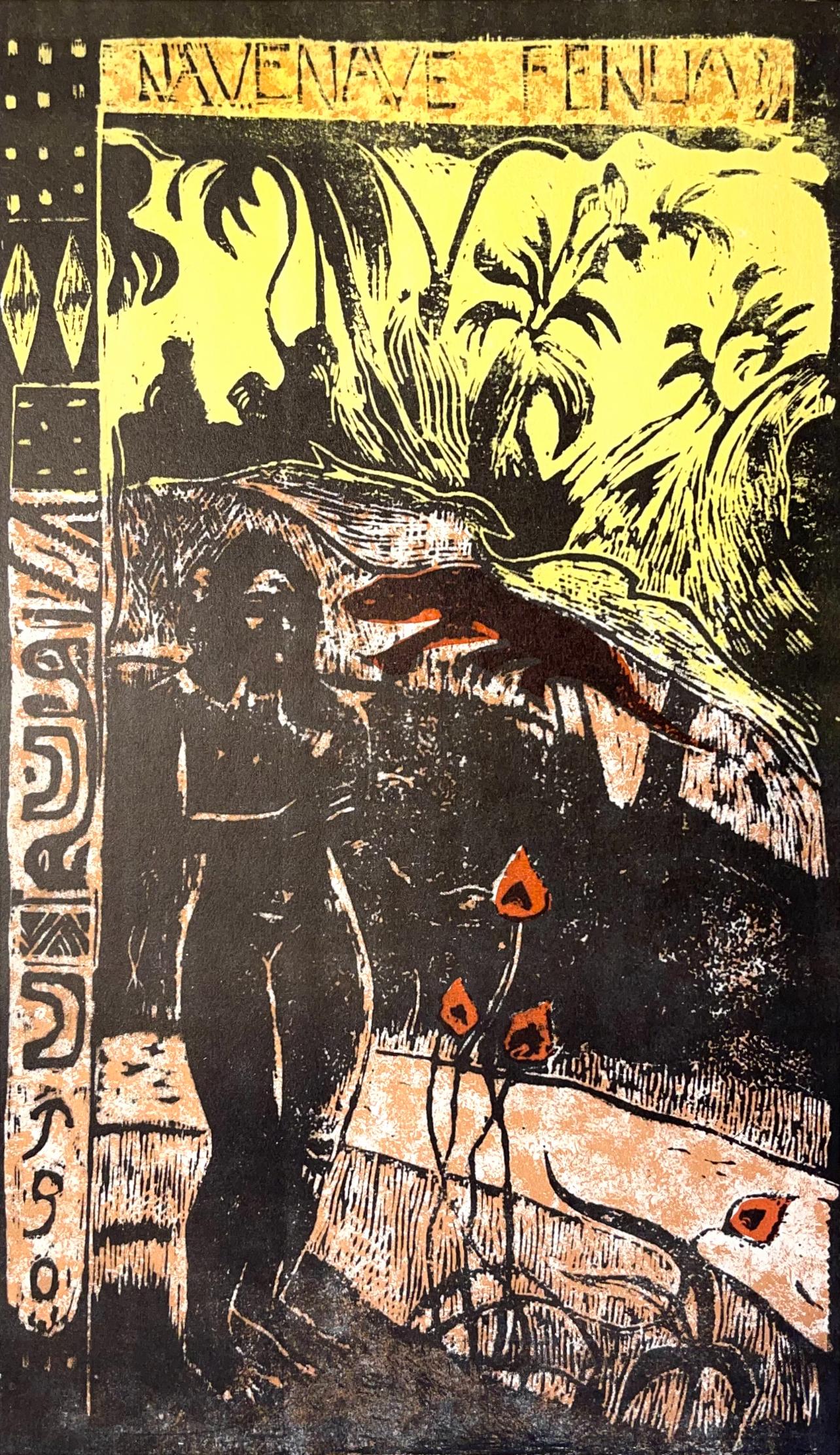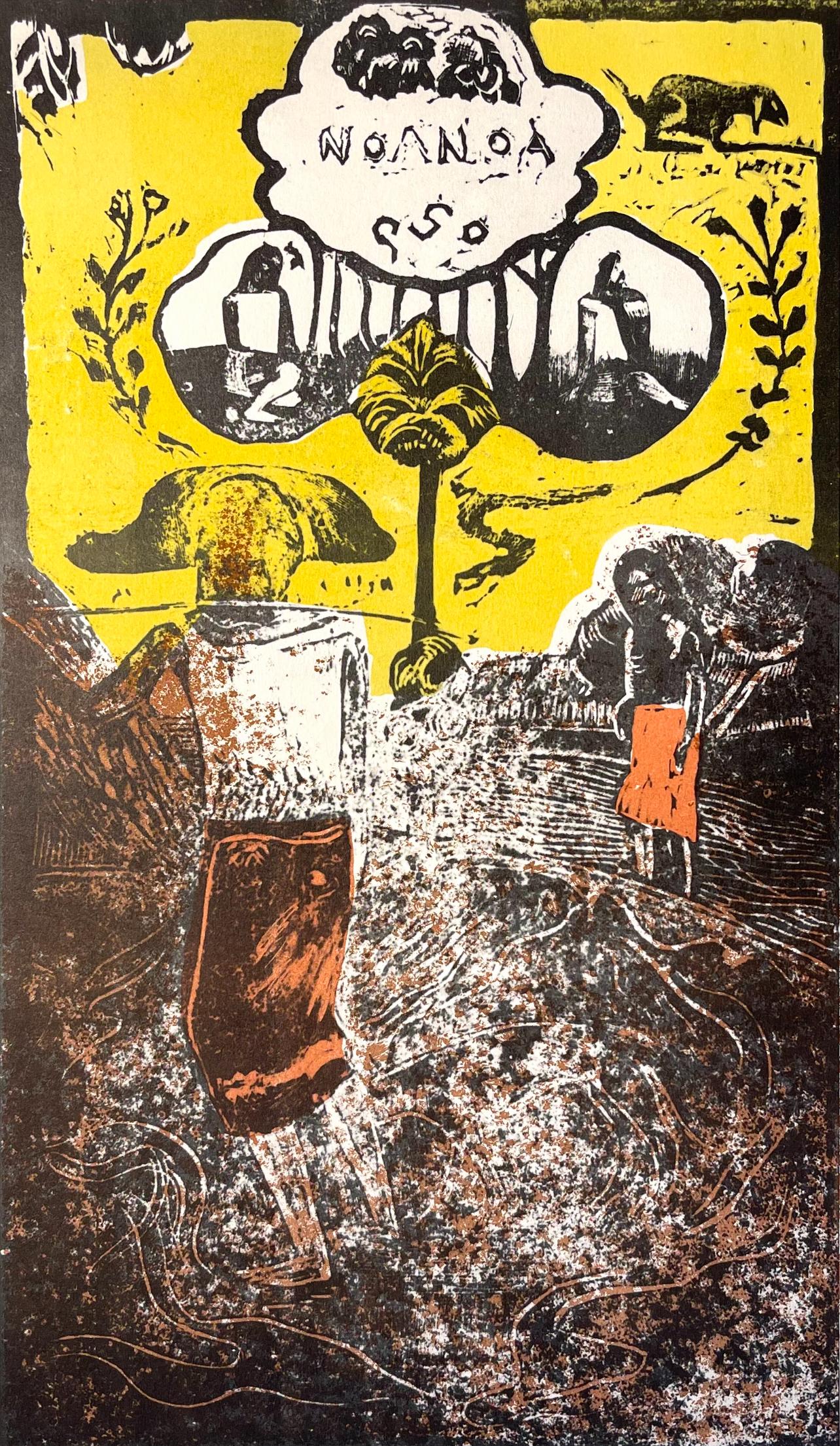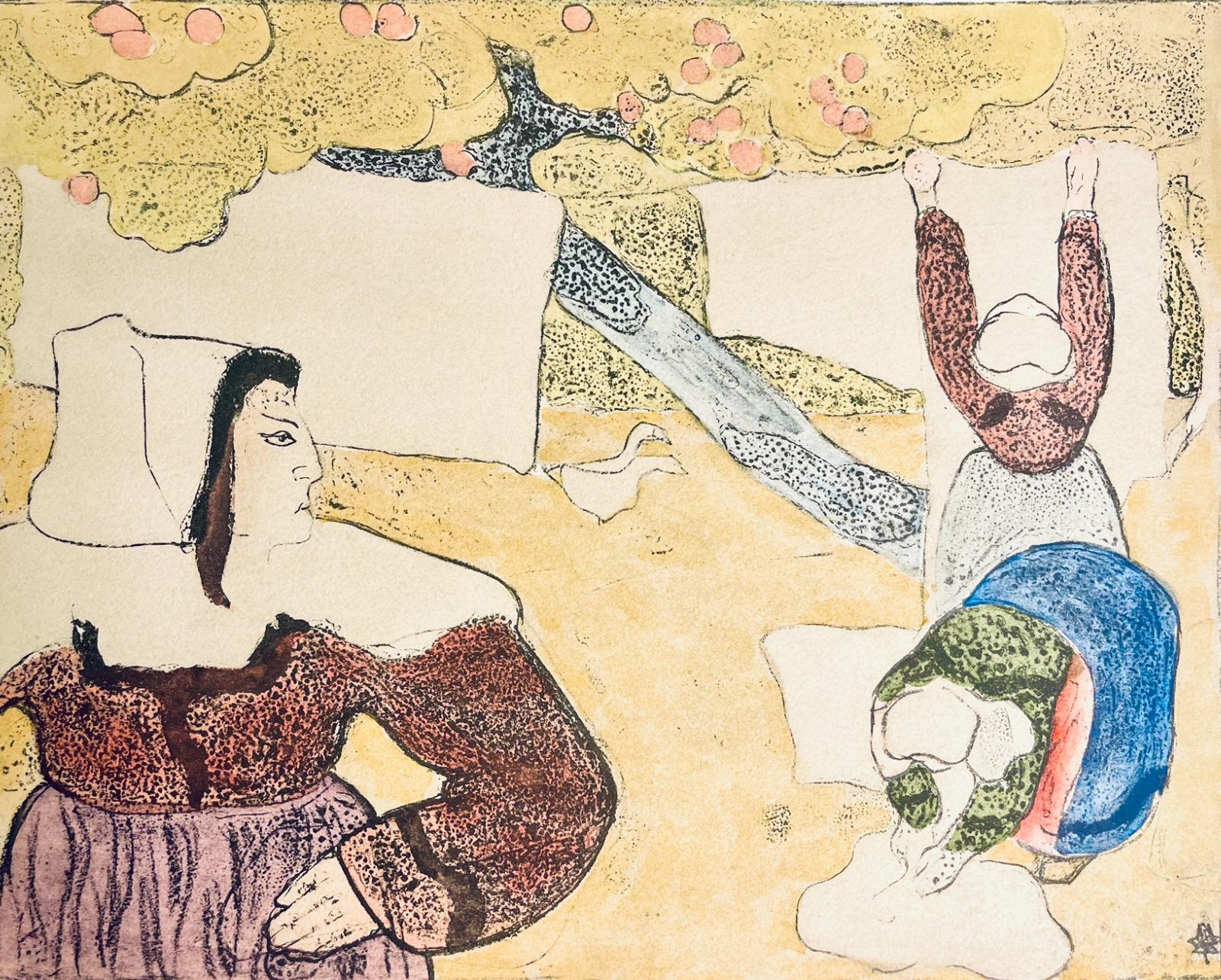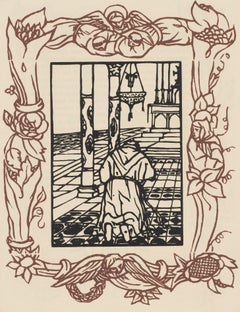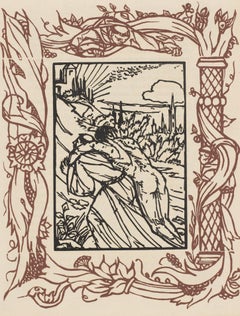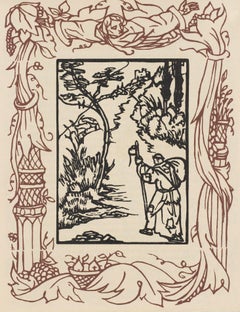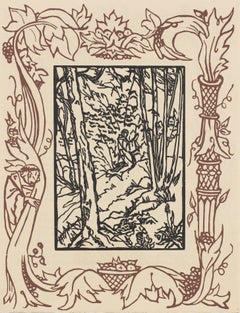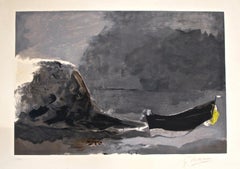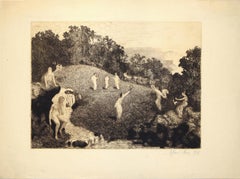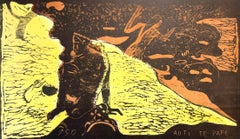
Gauguin, Women at the River (Auti te pape), Gauguin (after)
View Similar Items
Want more images or videos?
Request additional images or videos from the seller
1 of 10
Gauguin, Women at the River (Auti te pape), Gauguin (after)1946
1946
Price:$716
About the Item
- Creation Year:1946
- Dimensions:Height: 13 in (33.02 cm)Width: 17 in (43.18 cm)
- Medium:
- Movement & Style:
- After:Paul Gauguin (1848-1903, French)
- Period:
- Condition:
- Gallery Location:Southampton, NY
- Reference Number:1stDibs: LU1465214651282
About the Seller
4.9
Platinum Seller
Premium sellers with a 4.7+ rating and 24-hour response times
Established in 1978
1stDibs seller since 2021
1,172 sales on 1stDibs
Authenticity Guarantee
In the unlikely event there’s an issue with an item’s authenticity, contact us within 1 year for a full refund. DetailsMoney-Back Guarantee
If your item is not as described, is damaged in transit, or does not arrive, contact us within 7 days for a full refund. Details24-Hour Cancellation
You have a 24-hour grace period in which to reconsider your purchase, with no questions asked.Vetted Professional Sellers
Our world-class sellers must adhere to strict standards for service and quality, maintaining the integrity of our listings.Price-Match Guarantee
If you find that a seller listed the same item for a lower price elsewhere, we’ll match it.Trusted Global Delivery
Our best-in-class carrier network provides specialized shipping options worldwide, including custom delivery.More From This Seller
View AllComposition (Morane, N° 100), Les Petites Fleurs de St. Françoise, Émile Bernard
By Émile Bernard
Located in Southampton, NY
Wood engraving on vergé d'Arches paper. Inscription: unsigned and unnumbered, as issued. Good condition. Notes: From the volume, Les Petites Fleurs de St. François, 1928. Published b...
Category
1920s Post-Impressionist Figurative Prints
Materials
Woodcut
$716 Sale Price
20% Off
Free Shipping
Composition (Morane, N° 100), Les Petites Fleurs de St. Françoise, Émile Bernard
By Émile Bernard
Located in Southampton, NY
Wood engraving on vergé d'Arches paper. Inscription: unsigned and unnumbered, as issued. Good condition. Notes: From the volume, Les Petites Fleurs de St. François, 1928. Published b...
Category
1920s Post-Impressionist Figurative Prints
Materials
Woodcut
$716 Sale Price
20% Off
Free Shipping
Composition (Morane, N° 100), Les Petites Fleurs de St. Françoise, Émile Bernard
By Émile Bernard
Located in Southampton, NY
Wood engraving on vergé d'Arches paper. Inscription: unsigned and unnumbered, as issued. Good condition. Notes: From the volume, Les Petites Fleurs de St. François, 1928. Published b...
Category
1920s Post-Impressionist Figurative Prints
Materials
Woodcut
$716 Sale Price
20% Off
Free Shipping
Composition (Morane, N° 100), Les Petites Fleurs de St. Françoise, Émile Bernard
By Émile Bernard
Located in Southampton, NY
Wood engraving on vergé d'Arches paper. Inscription: unsigned and unnumbered, as issued. Good condition. Notes: From the volume, Les Petites Fleurs de St. François, 1928. Published b...
Category
1920s Post-Impressionist Figurative Prints
Materials
Woodcut
$716 Sale Price
20% Off
Free Shipping
Gauguin, Women at the River (Auti te pape), Gauguin (after)
By Paul Gauguin
Located in Southampton, NY
Woodcut on vélin Utopian paper. Unsigned and unnumbered, as issued. Good Condition. Notes: From the folio, Gauguin, A portfolio of 12 color woodblocks, Paul Gauguin, French, 1848-19...
Category
1940s Post-Impressionist Figurative Prints
Materials
Woodcut
Gauguin, Change of Residence (Changement de résidence), Gauguin (after)
By Paul Gauguin
Located in Southampton, NY
Woodcut on vélin Utopian paper. Unsigned and unnumbered, as issued. Good Condition. Notes: From the folio, Gauguin, A portfolio of 12 color woodblocks, Paul Gauguin, French, 1848-1903 from the collection of the Museum Of Fine Arts, Boston, 1946. Rendered by Albert Carman (1899-1949); published the Museum Of Fine Arts, Boston and The Studio Publications, Inc., New York and London; printed by Holme Press Inc., New York, in an edition of MMMD. Excerpted from the folio, Paul Gauguin and Emil Bernard at Pont-Aven, Brittany, in 1888, each made a bas-relief, wooden panel to decorate a piece of furniture for a friend. In order to keep a record of their designs, a few inked impressions were made on paper. The illustration at left is a reproduction of a print which is possibly one of the above mentioned. It is further possible that this experiment later gave Gauguin the idea of making woodcuts. Just as his work in painting expressed a revolt against the overemphasis on factual representation of the nineteenth century in favor of decorative pattern and color, so also his woodcuts leaned strongly to the same side of the balance. Ten of the cuts reproduced (all excepting Soyez Amoureuses and Changement de Residence), which constitute the whole of his best known series, were made at Pont-Aven beginning in the fall of 1894, after Gauguin's return from his first trip to Tahiti and after he broke his ankle. They were at first roughly cut with a common carpenter's gouge, and the flat surfaces sandpapered and engraved with a sharp in-strument, perhaps an engraver's burin. A few trial proofs were printed in black ink only. Then the hollows were deepened with a woodcutter's gouge and highlights were added. An edition of thirty to fifty impressions of each subject, with the addition of color blocks (one, two or three), was made by Louis Roy...
Category
1940s Post-Impressionist Figurative Prints
Materials
Woodcut
$716 Sale Price
20% Off
Free Shipping
You May Also Like
Hong Kong urbanscape lithograph
By Ramon Moscardo Fernandez
Located in Barcelona, Barcelona
Josep Moscardó (1953) - Girona Cathedral
Lithograph - Hand signed
Lithograph measures 54x76 cm.
Frameless.
Numbered 12/150
Barcelona, 1953
Painter, sculptor and draftsman of deep-r...
Category
1990s Fauvist Landscape Prints
Materials
Lithograph
$425 Sale Price
40% Off
Marine Noire - Lithograph after Georges Braque - 1956
Located in Roma, IT
Signed and numbered.
Editions of 400 prints.
published by Maeght, Paris
Literature Reference:
D. Vallier, Braque. L'oeuvre gravé, Flammarion, Paris 1982, n. 1044, p.296.
Image Dimensions :50 x 72...
Category
1950s Post-Impressionist Landscape Prints
Materials
Lithograph
Marine Noire - Lithograph After Georges Braque - 1956
Located in Roma, IT
"Marine Noire" is a lithograph after the work of Georges Braque in 1956. The print is hand signed and numbered. This is an edition of 400 prints.
Bibliography: D. Vallier, Braque. L'oeuvre gravé, Flammarion, Paris 1982, n. 1044, p. 296.
Good conditions except for very light foxings and little folds on the corner.
Georges Braque (1882-1963) was a French Fauve painter who began to rethink his own painting style after admiring Picasso’s Les Demoiselles...
Category
1950s Post-Impressionist Landscape Prints
Materials
Lithograph
Figures in the Landscape - Etching by J. A. Flour - 1916
By Jules Adrian Flour
Located in Roma, IT
Figures in the Landscape is an original artwork realized by Jules Adrian Flour in 1916. Original etching on paper.
The artwork is glued on cardboard. Hand-signed in pencil by the ar...
Category
1910s Post-Impressionist Figurative Prints
Materials
Etching
Working - Original Etching by A. Delasalle - Mid-20th Century
By Angèle Delasalle
Located in Roma, IT
Working is a contemporary artwork realized by the French artist Angèle Delasalle in the Mid-20th Century.
Original etching and drypoint.
Signed and ...
Category
Mid-20th Century Post-Impressionist Figurative Prints
Materials
Etching
Gerona Cathedral urbanscape lithograph
By Josep Moscardo
Located in Barcelona, Barcelona
Josep Moscardó (1953) - Girona Cathedral
Lithograph - Hand signed
Lithograph measures 74x52 cm.
Frameless.
Numbered 121/150
Barcelona, 1953
Painter, s...
Category
1990s Post-Impressionist Landscape Prints
Materials
Lithograph
$212 Sale Price
40% Off
Recently Viewed
View AllMore Ways To Browse
Tahitian Painting
Hokusai Katsushika
Jacqueline Lamba
Japanese Tea Set 5 Piece
Kara Walker
Le Chat Noir
Maerten De Vos
Mother And Child Picasso Lithograph
Noyer Philippe
Persian Cat
Salvador Dali Flower
Seated Woman Picasso
Shunga Prints
Utamaro Kitagawa
Vintage Insect Book
Vintage Man Reading Newspaper
Vintage Thrift
Vitraux Pour Jerusalem
